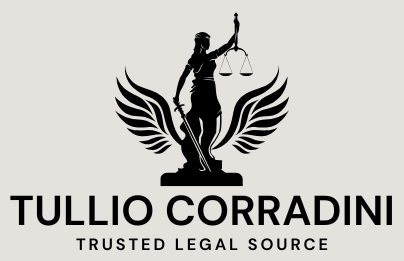As the finish of the calendar year draws in close proximity to, it is important for employers in California to recall there are a number of COVID-19 regulations and legislation that will even now apply to the office in 2023. The Division of Occupational Basic safety and Wellness of California’s (“Cal/OSHA”) continuously evolving COVID-19 Emergency Temporary Normal (“ETS”) that has been in impact for the previous two a long time is eventually expiring. Even so, the ETS will be replaced by Cal/OSHA’s new COVID-19 Prevention Non-Crisis Polices (“Permanent Standard”), which will remain in effect by means of 2024. This report delivers a complete update on the Long term Standard, AB 2693 (the new law modifying an employer’s notification and reporting demands under Labor Code part 6409.6), and the present-day point out of COVID-19 Supplemental Paid out Unwell Go away.
Cal/OSHA’s New COVID-19 Everlasting Typical
Cal/OSHA very first revealed a draft of the proposed Long lasting Typical on June 18, 2022. Unlike the ETS and its numerous iterations, the Long lasting Typical is a non-unexpected emergency regulation and thus was essential to carry on by means of the standard rulemaking process, which features a general public listening to on the proposed regulation. In progress of the general public listening to on September 15, 2022, we reviewed some of the major variations involving the ETS and the proposed Lasting Typical in a prior weblog submit. At the general public listening to, companies and labor reps voiced their issues around the Long lasting Conventional, which we in-depth below. Next minimal non-substantive revisions, the Occupational Protection and Health Standards Board (“Board”) voted to adopt the proposed Everlasting Common on December 15, 2022. The Long lasting Normal will become efficient when authorized by the Business office of Administrative Law in January (this could materialize as early as January 1, 2023) and will stay in result for two yrs just after the successful date.
As a short refresher, the Permanent Conventional removed or calm the next specifications under the current ETS:
- Staff Screening: Companies are no for a longer time necessary to develop and employ a method for screening employees for COVID-19 indicators (this kind of as a temperature check out or symptom questionnaire). The Long lasting Normal simply states that businesses have to (1) properly discover and answer to folks with COVID-19 indications at the workplace and (2) inspire workers to report COVID-19 signs or symptoms and to stay house when unwell.
- Exclusion Spend: The Long-lasting Common eliminated the need for companies to preserve an employee’s earnings and gains when the employee should be excluded from the workplace below the Long term Typical. Instead, the Long-lasting Regular demands only that businesses deliver staff with information concerning (1) COVID-19 similar benefits they may be entitled to less than federal, point out, or regional guidelines, (2) the employer’s go away policies, or (3) any depart confirmed by deal.
- Employer-Furnished Screening: Employers no lengthier require to make tests offered to any personnel dealing with COVID-19 signs. Under the Lasting Common, businesses should make screening obtainable only to staff members who had a close make contact with in the workplace and as essential less than outbreak protocols.
- Outbreak Protocols: Less than the ETS, companies experienced to stick to specified outbreak protocols if there are a few or a lot more COVID-19 instances in an exposed group at a function site in the course of the cases’ infectious interval, more than a 14-day period. The Permanent Normal modified the definition of “exposed group” to eradicate staff members who momentarily move via the get the job done area (earlier only masked staff passing via were eradicated). Additionally, outbreak protocols can now cease if there have been just one or much less scenarios in the exposed group inside the preceding 14 days (unlike the ETS which demanded no new circumstances for the duration of the lookback period of time). Notably, even so, businesses have to now report key outbreaks (20 or extra scenarios over a 30-working day period) to Cal/OSHA, which is possible to result in a subsequent Cal/OSHA investigation.
- Employee Notifications: The Long term Common modified notification needs for workforce who had been likely exposed in the place of work. The observe ought to be offered “as before long as possible” and defers to Labor Code area 6409.6 (detailed under) on the variety and written content of the recognize. Independently, the Long term Common demands businesses to notify employees and unbiased contractors who had a near contact, as properly as any employer with an staff who experienced a near get hold of, “as shortly as feasible,” and in no situation for a longer time than the time needed to meet up with the exclusion requirements below the Long lasting Common.
The ETS needed employers to retain a standalone COVID-19 Prevention Approach (“CPP”). Under the Long-lasting Normal, companies now have the choice of either figuring out their COVID-19 procedures that deal with COVID-19 as a office hazard in their penned Injury and Illness Prevention Application (“IIPP”) or holding them in a different doc. Businesses should take note that although particular prerequisites beneath the ETS, which includes performing a COVID-19 hazard assessment, providing COVID-19 schooling, investigating workplace exposures, and having corrective action, are not expressly required below the Permanent Standard, they are still expected pursuant to Cal/OSHA’s IIPP regulation.
Changes to Staff Notification and Reporting Necessities
On September 29, 2022, Governor Newsom signed Assembly Invoice (“AB”) 2693 into legislation. AB 2693 amends the COVID-19 notification and reporting specifications in California Labor Code portion 6409.6. Under AB 2693, the notification prerequisite (comprehensive under) is now much less burdensome on companies. Moreover, AB 2693 eradicates the prerequisite under section 6409.6 that companies notify the regional general public wellbeing company in just 48 hours of an outbreak. Although companies independently may well be expected by nearby public health businesses to report an outbreak, there will no longer be a obligatory statewide outbreak reporting necessity. The variations less than AB 2693 get impact on January 1, 2023, and will expire on January 1, 2024.
Less than the present version of segment 6409.6, employers must offer within a single business enterprise day a written discover to all workforce, and the businesses of subcontracted workforce, who were on the premises at the same worksite as the “qualifying individual” inside the infectious period of time that they could have been exposed to COVID-19. Starting January 1, 2023, employers will have the alternate choice of submitting a see of a likely COVID-19 publicity in the office as opposed to providing all employees a created recognize. If the employer chooses to use a posted observe, it must be posted in all sites the place notices to staff members concerning workplace guidelines or restrictions are usually posted, such as any current on-line personnel portal, and have to contain the pursuing information and facts:
- The day that the verified COVID-19 situation was past at the worksite.
- The location of the prospective exposures such as the office, floor, setting up, or other location.
- Call information where staff can obtain methods on COVID-19-associated advantages that the staff could be entitled.
- Get in touch with information and facts where staff members can obtain methods associated to the employer’s program for cleaning and disinfecting. Notably, the ETS and Everlasting Standard no for a longer period have to have workplace cleaning and disinfection protocols, so companies can refer to their general cleansing and/or disinfection protocols.
The discover ought to (1) be posted within a person small business working day from when the employer gets notice of opportunity exposure, (2) continue to be posted for no significantly less than 15 calendar times, and (3) be exhibited in English and any other language spoken by the the vast majority of workforce. Employers ought to be aware that the necessity to put up in a single company working day is stricter than the Long-lasting Standard’s notification prerequisite mentioned earlier mentioned and businesses who selected to supply recognize by publishing should really for that reason adhere to the a person working day requirement. Records of the posted notices and a log of the dates when the notices were being posted need to be managed for 3 several years.
Employers might go on to fulfill the notification prerequisites beneath part 6409.6 by supplying a created recognize to all likely exposed workers or employees of subcontracted businesses. The penned notice can be circulated by, but is not confined to, particular provider, electronic mail, or text information, and should appear in English and any other language recognized by the greater part of personnel. Whilst the created detect does not show up to have to have the unique information and facts outlined higher than, employers should incorporate the exact same particulars demanded for the posted discover in the prepared discover and the similar recordkeeping necessities use to published notices as well. Notably, the amendments to segment 6409.6 do not point out impartial contractors. Consequently, to fulfill the notification needs beneath each amended portion 6409.6 and the Long term Normal, businesses must assure they also notify any impartial contractors (or their companies) at the worksite of any prospective publicity.
2021 COVID-19 Supplemental Compensated Sick Leave
On September 30, 2022, Governor Newsom signed into law Assembly Bill (“AB”) 152, which extended 2022 COVID-19 Supplemental Compensated Ill Leave (“CSPSL”) via December 31, 2022. As of suitable now, there is no proposed legislation to set up a new CSPSL for 2023. On Oct 17, 2022, Governor Newsom introduced that the state’s COVID-19 Point out of Emergency will conclude on February 28, 2023. The announcement said that the February deadline will permit the overall health care method wanted adaptability to deal with any possible surge that may well occur immediately after the holiday seasons in January and February and will give condition and local associates the time wanted to put together for the phaseout.
Notably, employers in certain jurisdictions may possibly nevertheless need to give nearby supplemental compensated unwell depart (“LSPSL”) in early 2023. The LSPSL ordinances for the metropolitan areas of Oakland and Los Angeles and the unincorporated county of Los Angeles will expire two months immediately after the “COVID-19 nearby emergency” expires, which is different from the statewide Point out of Emergency. The Town of Los Angeles has introduced it will carry its local state of crisis on February 1, 2023, ensuing in its LSPSL expiring on February 15, 2023. However, Oakland and Los Angeles County have nevertheless to announce when they will carry their neighborhood unexpected emergency. The City of Prolonged Beach also has an LSPSL, but its expiration day is identified by the Lengthy Beach front Town Council. Companies with San Francisco-based personnel also need to continue to give Community Wellness Crisis Depart, which we formerly discussed at-size below.
Summary
As 2022 arrives to an close, companies ought to evaluate the new COVID-19 rules and regulations and revise their IIPPs/CPPs, employee notifications, and COVID-19 sick pay out insurance policies appropriately. Employers with any queries or problems must seek the advice of with experienced employment counsel to be certain they keep on being compliant.
The authorized landscape carries on to evolve promptly and there is a lack of clear-reduce authority or bright line regulations on implementation. This write-up is not meant to be an unequivocal, a single-dimension matches all steerage, but as an alternative signifies our interpretation of in which relevant legislation now and typically stands. This short article does not address the probable impacts of the numerous other regional, state and federal orders that have been issued in response to the COVID-19 pandemic, together with, with no limitation, opportunity liability ought to an worker become ill, necessities pertaining to loved ones leave, ill fork out and other troubles.











More Stories
California Proposition Regarding App-Based Drivers is Largely Here to Stay (For Now)
Court of Appeal: Privette Doctrine Does Not Apply to Landlord-Tenant Relationships | California Construction Law Blog
USDA Proposes New “Made in the USA” Standard